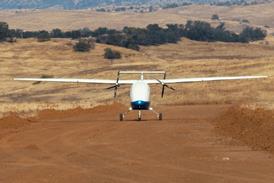With all three Rolls-Royce Trent-powered Airbus A380 operators undertaking engine changes in their fleets, uncertainty has emerged over the availability of spare powerplants.
Qantas, which suffered the original uncontained Trent 900 failure which sparked inspection of the powerplants, has changed one A380 engine and taken another two off-wing.
A spokesman for the Australian carrier would not be drawn on whether it feels it has enough engines in reserve, but states that the carrier has two or three spares.
"But they're not necessarily all in the same place," he points out. The carrier's six A380s remain grounded.
Air Transport Intelligence understands that Lufthansa would struggle to carry out another engine change, having already swapped a Trent 900 on one of its A380s.
Sources familiar with the situation at the German flag-carrier state that there is a "very, very small number of spare engines" available and that it would be "very difficult" to undertake another change.
Lufthansa has four A380s in its fleet, delivered over the six months since May, and is still operating a relatively limited network with the type.
"We're not flying an extensive A380 programme yet," says a spokesman for the carrier, adding that this has given Lufthansa a "big advantage" in managing the crisis.
Singapore Airlines has also opted for three Trent 900 engine changes on its fleet, and sources close to the airline have also raised questions as to whether it has enough spares within easy reach. The carrier has 11 A380s.
Rolls-Royce declines to detail spare engine reserves for the carriers, or discuss any measures it is taking to ensure availability.
Following the failure on the Qantas A380 on 4 November, Airbus issued an all-operator telex detailing non-modification inspections to be carried out before carriers conducted further flights with the Rolls-Royce-powered variants.
For each engine, two personnel were required, it stated, and that the examination would typically take 9-14h for a revenue flight and 6h for a non-revenue flight.
It subsequently emerged that Rolls-Royce had directed carriers to check for oil leaks in the engine, and that an oil fire in the high- and intermediate-pressure regions of the powerplant was suspected of causing the failure of a turbine disc.
European regulators have since issued an emergency airworthiness directive ordering carriers to conduct extended ground-idle runs with the engine and inspect both the low-pressure turbine blades and the intermediate- and high-pressure structures within 10 flight cycles, repeating the checks at least once every 20 cycles.
Source: Air Transport Intelligence news
















